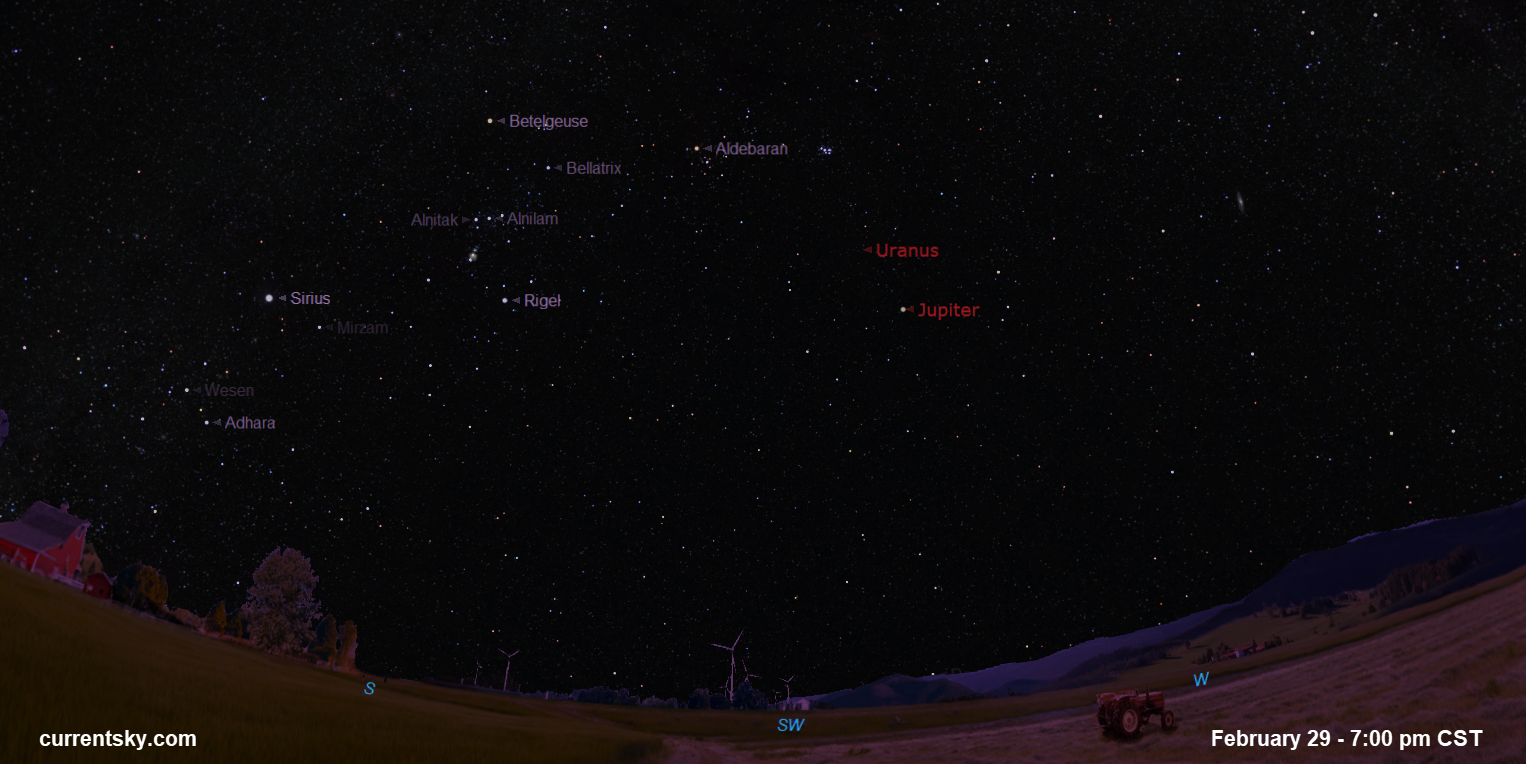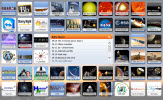February 2024
This month planet viewing is mostly a morning effort with the two inner planets, Mercury and Venus, visible rising ahead of the Sun. Jupiter and Uranus are located above the southwestern horizon at sunset and are the evening planets.
Our Moon usually has some conjunctions with planets and bright stars along the Moons' monthly orbital path. This month is no exception so be sure to check the monthly calendar for conjunction dates.
This year, 2024, is a leap year with an extra day added to February. This happens every four years, except when the year is divisible by 100 but not by 400. The reason for this is to keep the calendar in sync with the Earth's orbit around the Sun, which takes about 365.25 days.
Without leap years, the seasons would gradually shift over time and cause problems for agriculture, astronomy and other activities that depend on the solar cycle.
Click here to learn more about leap years.
Click here for the month at a glance calendar.

What is this? "It's a prediction of when Lees Summit, MO, will have good weather for astronomical observing." Click on the graphic to go to the Clear Sky web site.

Mercury remains visible as a morning planet for the first half of this month but each morning Mercury is orbiting eastward moving closer to the time of sunrise and superior conjunction on the 28th.
Venus is very visible high above the southeastern horizon and continues to outshine everything except the Moon in the pre-sunrise skies.
Mars slowly emerges into the morning skies as each day it rises earlier than the Sun. Watch for a close conjunction with Venus on the 22nd.
Dwarf Planet Ceres is in the morning skies rising about 2-3 hors before the Sun rises. However with an apparent magnitude greater than 8.0 this Dwarf Planet will only be visible using some optical assistance or time exposure images.
Jupiter is visible over the southwestern horizon at sunset and will continue to be visible after sunset local time through this month, but each day setting closer to sunset.
Saturn is very low above the southwestern horizon at sunset and by mid-month will be lost in the setting Sun's glare.
Watch on the 10th for a close conjunction between Saturn and the 1-day young waxing cresnet Moon.
Uranus is located to the east from Jupier and wit an apparent magnitude less than 6.0 this outer ringed planet could be visible with the unaided eye in dark enough skies.












